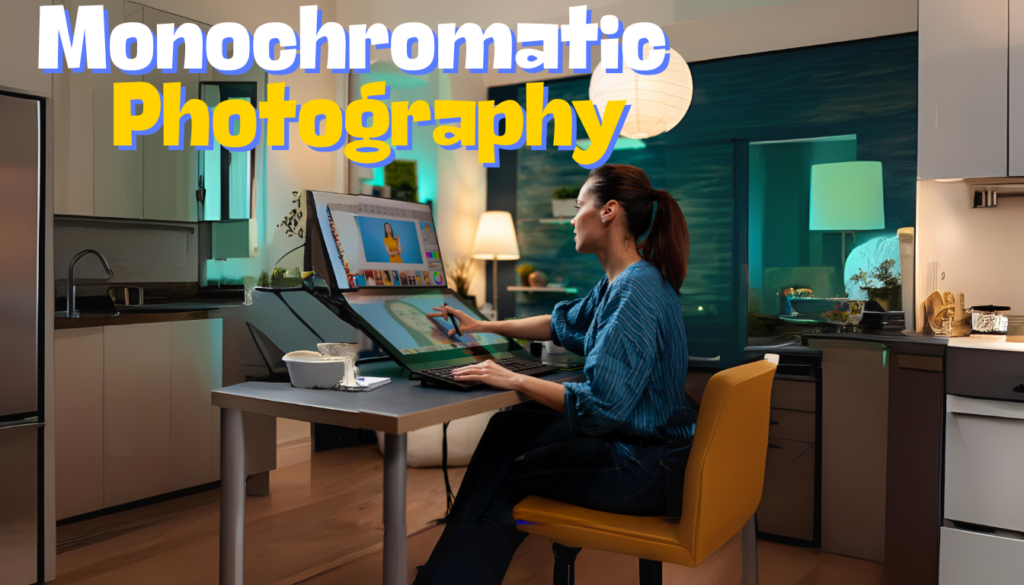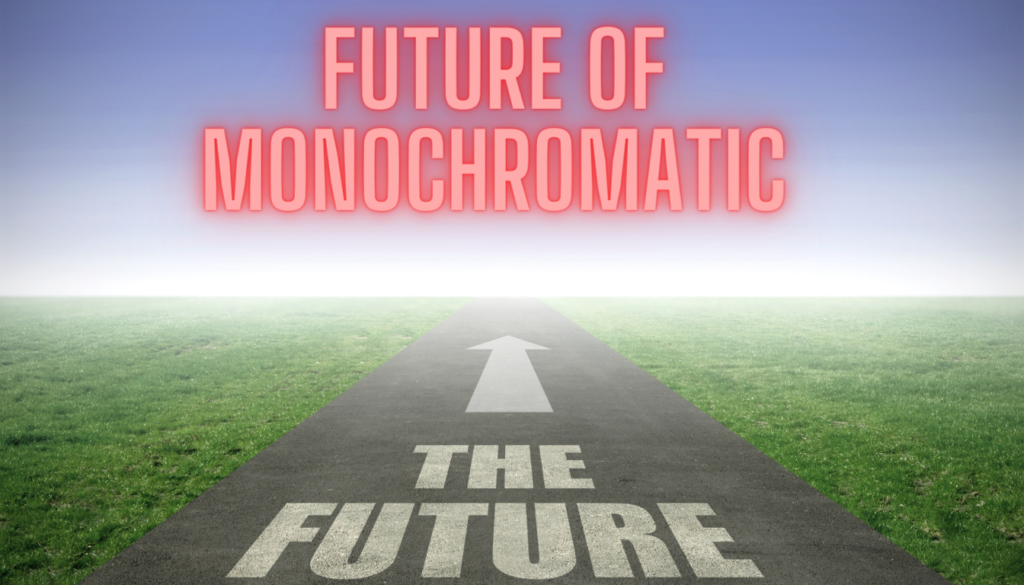Introduction
Monochromatic design is a powerful approach to creating a harmonious and sophisticated space. It is characterized by the use of a single color or variations of a single color throughout the multimedia design. This creates a cohesive and visually pleasing aesthetic that is both elegant and impactful. By embracing monochromatic, you can transform your space into a minimalist haven that exudes simplicity and sophistication.
Points to Note:
- Monochromatic design utilizes a single color or variations of a single color throughout the design.
- It creates a cohesive and visually pleasing aesthetic.
- Monochromatic design is known for its simplicity and sophistication.
- By embracing monochromatic design, you can create a minimalist and harmonious space.
- Monochromatic design is particularly well-suited for interior design.
Table of Contents
History and Evolution
Monochromatic design has a rich history and has evolved across different creative fields. It originated as a reaction against ornate and decorative styles, championing a return to the basics of form and function.
| Era | Milestone |
|---|---|
| Ancient Art | Use of single colors in pottery and murals to convey simplicity and uniformity. |
| Middle Ages | Monochromatic color schemes prevalent in stained glass art and manuscript illuminations. |
| Renaissance | Artists experiment with chiaroscuro techniques to add depth using shades of one color. |
| 19th Century | Monochrome photography becomes popular, emphasizing texture and contrast over color. |
| Modern Art (20th Century) | Movements like minimalism and monochrome painting emphasize aesthetic purity through single-color artworks. |
| Digital Age (21st Century) | Digital design and interfaces often use monochromatic color schemes for clarity and usability. |
The Essence of Monochromatic
Monochromatic design is a visual style that prioritizes simplicity, clean lines, and a cohesive color palette. It involves using varying shades and tones of a single color to create a visually harmonious and unified aesthetic. This design approach allows the core elements of the composition to shine, creating a serene and uncluttered visual experience.
In the realm of art, monochromatic painting and art explore the expressive power of a single color and its variations. By working with a limited color palette, artists can focus on texture, form, and composition, conveying emotions and narratives through the careful selection and manipulation of hues, shades, and tones.
Monochromatic Design in Art
In the art world, monochromatic has been embraced by renowned artists throughout history. One notable example is the iconic “Blue Period” of Pablo Picasso, where he predominantly used various shades of blue to convey melancholy and introspection in his paintings. Another notable artist renowned for his monochromatic works is Mark Rothko, whose large-scale color field paintings explore the emotional and spiritual impact of color through soft edges, layered pigments, and a contemplative presence.
Here is an example of a monochromatic table showcasing the power and versatility of a single color in art:
| Artist | Artwork |
|---|---|
| Pablo Picasso | The Old Guitarist |
| Mark Rothko | No. 61 (Rust and Blue) |
As demonstrated in the table above, these artists explored the emotional and visual potential of monochromatic palettes, proving that a single color can evoke a wide range of sentiments and create captivating artistic experiences.
By understanding the essence of monochromatic design in both art and broader design contexts, you can harness its power to create visually compelling compositions that evoke emotions and communicate your intended message.
Applying Monochromatic Design in Interior Design
Monochromatic is a popular and effective approach when it comes to interior design. It offers a sense of harmony and simplicity, making it an ideal choice for creating serene and inviting spaces. By utilizing a single color or variations of a single color, you can achieve a cohesive and visually pleasing aesthetic throughout the entire space.
The Benefits of Monochromatic
Embracing monochromatic design offers several advantages. One of the main benefits is the cohesive and harmonious aesthetic it creates. By using a single color or variations of a single color, you can achieve a visually pleasing and consistent space that exudes a sense of calm and tranquility.
A monochromatic color scheme has the power to make a space feel larger and more open. The absence of multiple colors eliminates visual distractions and creates a sense of spaciousness. This can be especially beneficial for smaller or cramped areas, as it gives the illusion of a more expansive and airy environment.
To further illustrate the benefits of monochromatic design, let’s take a look at a comparison of a monochromatic color scheme versus a multicolored design:
| Monochromatic Design | Multicolored Design |
|---|---|
| Creates a cohesive and harmonious aesthetic. | Can result in a visually cluttered and chaotic look. |
| Makes a space feel larger and more open. | Can make a space appear smaller and more crowded. |
| Highlights the core elements of the design. | Makes it difficult to distinguish individual elements. |
As you can see, monochromatic design offers clear advantages in terms of aesthetics and spatial perception. It allows for simplicity, cohesiveness, and the celebration of key design elements.
Tips for Incorporating Monochromatic Design

If you’re interested in incorporating monochromatic design into your space, there are a few tips to keep in mind.
Choose a Color
First, choose a color that you love and that resonates with the overall aesthetic you want to achieve.
Use Variations
Next, consider using variations of that color, including lighter and darker shades, to add depth and visual interest. Additionally, pay attention to texture and pattern to create visual contrast within the monochromatic scheme.
Incorporate Pops
Finally, don’t be afraid to incorporate pops of another color or metallic accents to add visual impact and create a focal point.
Monochromatic Design in Different Design Disciplines
Monochromatic design is a versatile approach that transcends various design disciplines, allowing for stunning and captivating creations. Its simplicity and cohesion make it suitable for fashion, graphic design, and photography, among others. Let’s explore how monochromatic design manifests in these different fields.
Fashion
In fashion, monochromatic outfits are a go-to choice for achieving a sleek and sophisticated look. By dressing in a single color from head to toe, you can create an ensemble that exudes elegance and confidence. Monochromatic fashion allows you to experiment with different shades, textures, and fabrications, resulting in a visually striking and cohesive appearance.
Graphic Design
Monochromatic color palettes play a vital role in graphic design, particularly when aiming to create bold and impactful visuals. By restricting the color scheme to shades and tones of a single color, designers can effectively communicate a focused message and evoke specific emotions. Monochromatic graphic design allows for clear and concise communication, conveying a sense of sophistication and professionalism.
Photography

In photography, monochromatic images have a unique ability to evoke emotion and create a sense of drama. By utilizing a single color or variations of it, photographers can capture striking images that are visually appealing and thought-provoking. Monochromatic photography allows for a deeper exploration of light, shadow, and composition, resulting in visually stunning and expressive photographs.
Challenges and Considerations of Monochromatic Design
While monochromatic design offers numerous advantages, it’s important to be aware of the challenges and considerations that come with this approach. By understanding these factors, you can ensure a successful implementation of monochromatic design in your space.
Finding the Right Balance
One of the key challenges of monochromatic design is striking the right balance between using a single color and incorporating visual interest and contrast. It’s crucial to avoid a design that feels flat or monotonous. To overcome this challenge, consider incorporating elements such as texture, pattern, and varying shades and tones of the chosen color.
Choice of Color
When opting for a monochromatic color scheme, selecting the right color is essential. Different colors evoke different emotions and have varying impacts on the overall ambiance of the space. It’s crucial to choose a color that aligns with the desired aesthetic and atmosphere of the room, while also considering the lighting conditions.
Consideration of Texture and Pattern
Texture and pattern play a vital role in creating visual interest within a monochromatic design. Incorporating diverse textures and patterns can help break up the uniformity of a single color, adding depth and dimension to the space. Consider using elements such as textured wallpapers, patterned fabrics, or textured surfaces to enhance the visual appeal of the design.
Harmony with Overall Aesthetic
Monochromatic design should harmonize with the overall aesthetic of the space. It’s crucial to ensure that the chosen color complements the existing elements, such as furniture, decor, and architectural features. The monochromatic design should enhance and unify the overall look and feel of the room.
Attention to Lighting Conditions
Lighting plays a significant role in monochromatic design. Different lighting conditions can alter the perception of color, brightness, and depth within a space. It’s essential to consider both natural and artificial lighting when selecting and implementing a monochromatic color scheme. This consideration will help create a balanced and visually appealing environment.
To successfully execute monochromatic design, you must carefully navigate these challenges and considerations. By finding the right balance, selecting the appropriate color, incorporating texture and pattern, harmonizing with the overall aesthetic, and paying attention to lighting conditions, you can create a visually dynamic and harmonious monochromatic design.
| Challenges | Considerations |
|---|---|
| Finding the Right Balance | Choice of Color |
| Incorporating Texture and Pattern | Harmony with Overall Aesthetic |
| Attention to Lighting Conditions |
The Future of Monochromatic Design

Monochromatic design has come a long way and shows no signs of fading into obscurity. As we anticipate the future, it is clear that monochromatic design will continue to hold a prominent position in the world of interior design. With its emphasis on simplicity, harmony, and functionality, monochromatic design offers a timeless aesthetic that transcends trends and appeals to a wide range of tastes and preferences.
The future of monochromatic interior design is bound to be driven by advancements in technology and shifts in cultural values. It will evolve alongside emerging trends and innovative materials, allowing designers and homeowners to create visually striking and impactful spaces that reflect their individuality.
Incorporating Technology into Monochromatic Design
Advancements in technology have the potential to revolutionize monochromatic design, opening up new possibilities for creativity and personalization. Integration of smart home features can seamlessly blend technology with monochromatic interiors, creating spaces that are not only visually cohesive but also highly functional. Use of artificial intelligence will also revolutionize designs.
Imagine a monochromatic design where lighting, temperature, and sound systems can be controlled with a simple voice command or a touch of a button. Technology can turn monochromatic spaces into immersive environments, enhancing the overall experience and transforming them into truly unique and dynamic spaces.
Blending Monochromatic Design with Sustainability
The future of monochromatic design will also witness a greater emphasis on sustainability and eco-friendly practices. As environmental consciousness continues to grow, designers and homeowners will seek ways to incorporate sustainable materials, energy-efficient systems, and environmentally responsible design principles into their monochromatic spaces.
By combining monochromatic design with sustainability, we can create interiors that not only exude elegance and simplicity but also contribute to a healthier planet. This fusion of aesthetics and environmental responsibility will allow us to create spaces that are both visually stunning and socially conscious.
Personalization and Fusion of Styles
While monochromatic design is known for its minimalist and cohesive aesthetic, the future will see a greater focus on personalization and the fusion of different design styles. Monochromatic interiors will no longer be limited to a single color palette, but will instead feature a range of complementary hues and textures.
Breaking Boundaries with Monochromatic Design
The future of monochromatic design is full of possibilities and opportunities to push boundaries. Designers will continue to experiment with textures, finishes, and unconventional materials, creating unexpected combinations and pushing the limits of what monochromatic design can achieve.
Artistic and sculptural lighting designs will play a pivotal role in creating visually impactful spaces.
Lighting design will take center stage as a means to elevate monochromatic spaces in 2024. Artistic and sculptural lighting fixtures will be used to create dramatic focal points and enhance the overall ambience of a room. From statement chandeliers to sleek and minimalist floor lamps, lighting will not only serve a functional purpose but also become a work of art in its own right.
| Trends | Description |
|---|---|
| Biophilic Minimalism | A combination of minimalism and a love for nature, incorporating natural elements and earthy color palettes. |
| Monochromatic Color Palettes | Exploring the potential of using a single color in varying shades and tones. |
| Multi-functional Furniture and Smart Storage Solutions | Optimizing functionality and space efficiency without compromising aesthetics. |
| Negative Space | Strategically incorporating empty spaces to create balance and promote a sense of calmness. |
| Japandi Style | A harmonious fusion of Japanese and Scandinavian design, combining natural materials and clean lines. |
| Sustainability and Ethical Design | Incorporating eco-friendly practices and ethical manufacturing processes for a better future. |
| Artistic and Sculptural Lighting Designs | Using lighting as a form of artistic expression and creating visually impactful focal points. |
Conclusion
Embracing monochromatic design allows you to create a visually stunning and deeply impactful space. Whether you apply it in interior design, fashion, or photography, the simplicity and cohesion of a monochromatic color scheme can transform your environment into an elegant and harmonious oasis. By considering the tips, trends, and challenges of monochromatic multimedia design, you can create a space that reflects your style and promotes a sense of calm and tranquility. Embrace the power of monochromatic design and elevate your space with its timeless beauty.
FAQ
What is monochromatic design?
Monochromatic design refers to a color scheme that uses variations of one color. It involves different shades, tints, and tones of a single hue to create a cohesive visual experience.
Why use a monochromatic color scheme in design?
The color scheme simplifies the visual experience, making it easier for the viewer to focus and understand the content. It’s often used to create harmony, balance, and a sense of calm in a design.
How do I choose the right color for a monochromatic design?
Choose a base color that aligns with the emotions or message you wish to convey. Consider the psychological impact of colors—blue can evoke calmness, red can signal energy, and green can promote a sense of balance.
Can monochromatic designs become boring or too simplistic?
While monochromatic designs are simpler, they don’t have to be boring. Using various textures, gradients, and shades can add depth and interest, preventing the design from feeling flat.
What are the challenges of using a monochromatic color scheme?
One of the main challenges is maintaining visual interest without the contrast that additional colors can provide. It requires a careful balance of light and dark variations and well-thought-out design elements to keep the viewer engaged.
How can I enhance a monochromatic design?
You can enhance a design by incorporating different textures, patterns, and materials that reflect light differently. Additionally, using strategic white space can improve the design’s clarity and visual impact.
Is monochromatic design suitable for all types of projects?
It can be effective for many types of projects, especially those aiming for a minimalist or sophisticated look. However, its suitability depends on the project’s goals, audience, and content. It may not be ideal for projects requiring high energy or differentiation through color.



